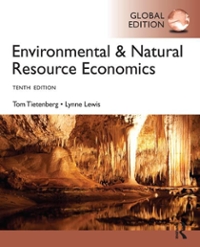Question
1. There is a traditional dilemma in achieving the economic goals of nations. If the government intends to boost the economy to experience economic growth,
1. There is a traditional dilemma in achieving the economic goals of nations. If the government intends to boost the economy to experience economic growth, it can deteriorate the balance of payments because part of the spending will inevitably be channeled to the purchase of foreign currency via imports or capital outflows. On the other hand, inflation could be stimulated due to the increase in spending and if the authorities choose to protect international reserves, this could translate into a contraction in economic activity. In short, the dilemma is that achieving external balance (maintaining international reserves) should not be done at the cost of limiting national economic growth and vice versa.
a. Draw the Swan diagram and indicate how many zones there are and what combinations can be achieved.
2. The Mundell-Fleming model assumes that a nation can achieve internal and external balance without changing the exchange rate, only by using fiscal and monetary policies. The model considers 3 markets, the goods market (IS curve), the money market (LM curve) and the balance of payments market (BP curve). The BP curve shows the different combinations of interest rates (i) and national income (Y) in which the balance of payments is in equilibrium; that is, when a trade deficit is accompanied by an equal capital inflow or when a trade surplus is associated with an equal capital outflow.
a. Draw a diagram indicating how the three curves: IS, LM, and BP, can be in equilibrium.
Step by Step Solution
There are 3 Steps involved in it
Step: 1

Get Instant Access to Expert-Tailored Solutions
See step-by-step solutions with expert insights and AI powered tools for academic success
Step: 2

Step: 3

Ace Your Homework with AI
Get the answers you need in no time with our AI-driven, step-by-step assistance
Get Started


